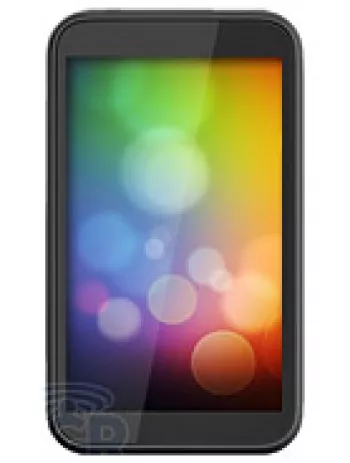
Introduction to HTC Flyer
The HTC Flyer, announced in February 2011 and released in May of the same year, marked HTC's ambitious entry into the tablet market. Distinctly different from its smartphone lineup, the Flyer brought together the company's design aesthetics with a focus on digital content consumption and productivity through its unique features.
Design and Build
The HTC Flyer features a sturdy and well-crafted body with dimensions measuring 195.4 x 122 x 13.2 mm and weighing 420.8 grams. Its silver finish along with a solid build quality speaks of its premium nature. The ease of holding the device in one hand made it a convenient option for those constantly on the go. Additionally, it accommodated a Mini-SIM slot, facilitating cellular connectivity.
Display
One of the core elements of the Flyer is its 7.0-inch LCD display, offering a resolution of 600 x 1024 pixels. Though the pixel density of approximately 170 ppi might seem modest compared to modern standards, it was adequate for reading, browsing, and multimedia consumption at the time. The display’s size and 16:9 aspect ratio were well-suited for watching videos and web browsing.
Platform and Performance
Under the hood, the HTC Flyer was powered by the Qualcomm MSM8255T Snapdragon S2 chipset, featuring a 1.5 GHz Scorpion CPU and Adreno 205 GPU. Running on Android 2.3.3 Gingerbread, with an upgrade path to Android 3.2 Honeycomb, it was coupled with HTC's Sense UI that personalized the user experience. The device was equipped with 1GB of RAM, ensuring a fluid multitasking experience for the user. Despite not being a powerhouse, it was sufficiently capable for the intended audience at the time.
Storage Capabilities
The Flyer was offered in two storage variants: 16GB and 32GB, both expandable via a dedicated microSDHC slot. This allowed users to store more applications, media, and documents without worrying about running out of space.
Camera Specifications
For photography and video calls, the HTC Flyer was equipped with a 5 MP rear camera capable of capturing 720p video. While not groundbreaking, it provided adequate quality for casual photos and media sharing. The front-facing 1.3 MP camera was essentially designed for video calls, capturing basic selfies and participating in video conferencing.
Audio and Connectivity
The HTC Flyer incorporated a loudspeaker and a 3.5mm audio jack, enabling users to enjoy media content. Connectivity options included Wi-Fi 802.11 b/g/n with DLNA and hotspot capabilities, Bluetooth 3.0 with A2DP support, and microUSB 2.0 for data transfer and charging. However, it lacked a radio function, which could be a drawback for users who enjoyed live FM broadcasts.
GPS and Sensors
For positioning, the Flyer utilized GPS and A-GPS technology. This was beneficial for navigation applications and location-based services. It also came with essential sensors such as an accelerometer and a compass, which were instrumental for various apps and functionalities.
Battery Life
One of the Flyer’s standout features was its non-removable Li-Po 4000 mAh battery, which delivered impressive standby time of up to 1470 hours. This robust battery life ensured that users could engage with content without needing frequent recharges, an essential aspect for mobile devices.
User Experience and Applications
HTC's Sense UI provided a unique user interface over the standard Android experience, adding widgets, social network feeds, and a polished overall interaction. The tablet came preloaded with applications to enhance productivity and entertainment, establishing it as a go-to choice for digital consumption.
Pricing and Market Position
At its launch, the HTC Flyer was priced around 300 EUR, positioning it as a mid-range tablet option. Despite the competition in the tablet market during that time, the Flyer's design, performance capability, and features made it an appealing choice for many users.
Conclusion
The HTC Flyer, although discontinued, remains a significant part of HTC's history in its attempt to diversify into the tablet market. Its design and feature set reflected HTC’s commitment to quality and innovation. While technology has significantly advanced since its release, the HTC Flyer offered users a reliable and versatile tablet experience during its time on the market.
Key Features of HTC Flyer
- Network Technology: GSM / HSPA
- Display: 7.0-inch LCD with 600 x 1024 pixel resolution
- Processor: 1.5 GHz Scorpion CPU with Qualcomm MSM8255T Snapdragon S2 chipset
- Memory: Expandable microSDHC card slot, with 16GB/32GB internal storage options and 1GB RAM
- Main Camera: 5 MP autofocus with 720p video recording
- Selfie Camera: 1.3 MP
- Operating System: Android 2.3.3 (Gingerbread), upgradable to 3.2 (Honeycomb) with HTC Sense UI
- Connectivity: Wi-Fi 802.11 b/g/n, Bluetooth 3.0, GPS, microUSB 2.0
- Battery: Non-removable Li-Po 4000 mAh with up to 1470 hours standby time
- Audio: 3.5mm jack and loudspeaker included
- Sensors: Accelerometer and compass
- Design: Silver color with dimensions of 195.4 x 122 x 13.2 mm and weight of 420.8 grams
HTC Flyer Key Disadvantages
- Discontinued status, meaning lack of support and updates.
- Heavy weight of 420.8 g which might be inconvenient for prolonged handheld use.
- Mini-SIM slot, outdated compared to current SIM standards (nano-SIM).
- Low screen resolution of 600 x 1024 pixels, resulting in a pixel density of only ~170 ppi.
- Runs on an older Android version (Gingerbread, upgradable to Honeycomb), which is no longer supported for security updates.
- Limited 1GB RAM, affecting multitasking and modern app performance.
- Outdated GPU (Adreno 205), not suitable for current graphics-intensive applications.
- Basic camera specs; 5 MP main camera and 1.3 MP selfie camera with limited video capabilities.
- No FM radio feature, which may be a downside for users who rely on this function.
- Non-removable battery, which might be a disadvantage for those who need to replace the battery.
- Price was relatively high at launch for the features offered.



























View Also
More Phones
All Rights Reserved +14266 Phones © Mobilawy 2025

























